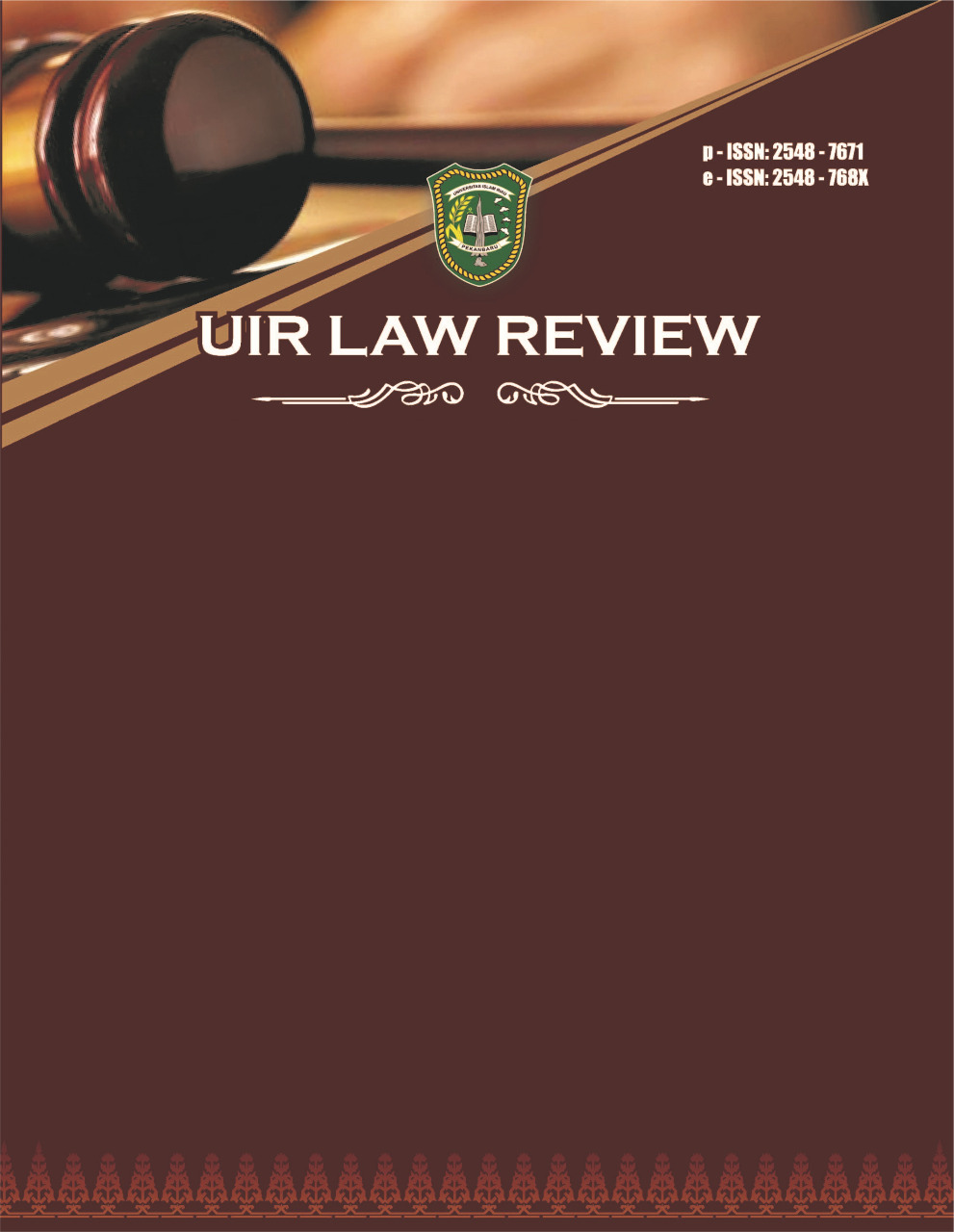Interpreting The State's Right to Control In the provisions of Article 33 Paragraph (3), The Constitution of 1945 Republic of Indonesia
DOI:
https://doi.org/10.25299/uirlrev.2020.vol4(2).6889Keywords:
Earth, Water, Natural wealth, Right to rule, StateAbstract
Article 33 paragraph (3) of The Constitution Republic of Indonesia in 1945 stipulates that "Earth, water and natural resources contained therein controlled by the State and used for the people's welfare". Understanding of the earth (which is called land) according to the provisions of Article 1 paragraph (4) of Law Number 5 of 1960 concerning Basic Regulations on Basic Agrarian Issues is the surface of the earth and the body of the earth underneath it and which is under water. The meaning of the provisions of Article 33 paragraph (3) in The Constitution of 1945 is that the State as the highest power organization of all people (the nation) acts as the Governing Body. The right to control the State or be controlled by the State in this article does not mean "owned", but in the sense of giving authority to the State as the highest power organization of the Indonesian nation. The Constitutional Court elaborated State's Right to Control becomes 5 (five) authorities whose purpose is as much as possible for the prosperity of the people, including: (1). Formulate policy (beleid), (2). Make arrangements (regelendaad), (3). Carry out management (bestuurdaad), (4). Carry out management (beheerdaad), and (5). Supervise (toeichthoudensdaad). The earth, water and natural resources contained in the earth are the main points of people's prosperity, therefore they must be controlled by the State and used for the greatest prosperity of the people.
Downloads
References
Arba, (2015). Indonesian Agrarian Law, Sinar Grafika, Jakarta.
Chomzah, Ali A., (2002). Land Law, Land Law Series I Awarding State Land Rights, Land Law II Certificate Series and Its Problems, Literature Achievement Publisher, Jakarta.
Gautama, S., (1990). Interpretation of the Basic Agrarian Law, Citra Aditya Bakti, Bandung.
Hatta, M. (1977). Elaboration of Article 33 in the Constitution of 1945, Mutiara, Jakarta.
Harsono, B., (2000),. Indonesian Agrarian Law, Djambat, Jakarta.
Indonesia, Constitution of 1945.
Indonesia, Law Number 5 of 1960 concerning Basic Regulations on Agrarian Principles.
Indonesia, Law Number 4 of 2009 concerning Mineral and Coal Mining.
Indonesia, Government Regulation 24 of 1997 concerning Land Registration.
Indonesia, Law Number 4 of 1996 concerning Mortgage Rights.
Indonesia, Constitutional Court Decision No. 001-021-022 / PUU-I / 2003 concerning Judicial Review Number 20 of 2002 on Electricity.
Manan, B., (1995). Growth and Development of the Constitution of a Country,Mandar Maju, Bandung.
Muljadi, K. and Widjaja, G., (2008), Rights to Land i n the Series of Assets, Kencana, Jakarta.
Santoso, U., (2010), Registration and Transfers of Land, Kencana, Jakarta.
Santoso, U., (2015), Land Acquisition of Land, Kencana, Jakarta.
Sitorus, O. and Dyawati, N., (1994),Land Rights and Condos A Legal Review, Dasamedia Utama, Jakarta.
Zarqoni, Muhammad M., (2015), Land Rights, Acquisitions, Origins and Derivatives, and Their Relationship with Legal Guarantees and Property Rights Protection, Achievement of Publisher Library, Jakarta.















